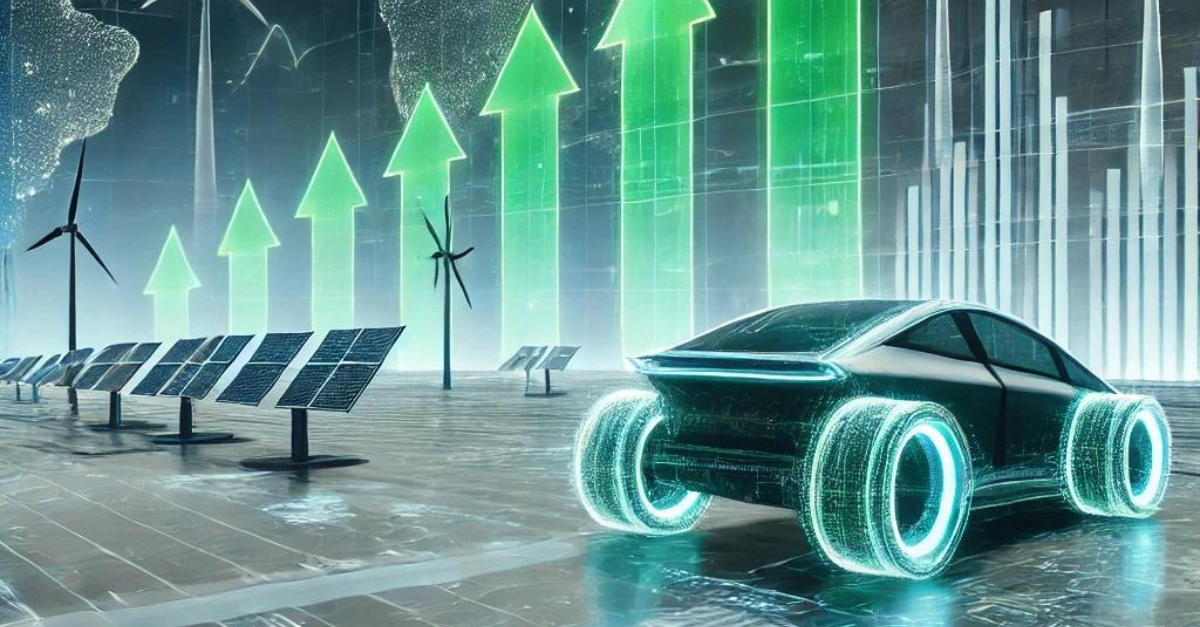Market Surge Fueled by Inflation Reduction Act: Clean Energy and EV Sectors Reap the Rewards
Published: 8.28.2024
The IRA, the largest climate investment in U.S. history, has spurred growth in the clean energy sector in the last year. Since its enactment, over 334 clean energy projects have been announced across 40 states, creating more than 100,000 jobs and attracting approximately $126 billion in investments. The act's incentives have catalyzed a surge in manufacturing, with over 90% of the projects focusing on expanding U.S. production capacities.
Key sectors benefiting from the IRA include solar and wind energy, battery storage, and hydrogen production. Solar energy companies alone have announced 67 major projects, while the wind energy sector has seen 20 projects initiated. Battery storage, essential for supporting the shift to renewable energy and EVs, has also experienced substantial growth, with 68 projects contributing nearly $41 billion to the U.S. economy.

The EV sector has been one of the primary beneficiaries of the IRA, with automakers and battery manufacturers rapidly expanding their U.S. operations. Over 141 EV-related projects have been announced, leading to the creation of more than 60,000 jobs and investments totaling nearly $80 billion. Companies like Toyota, Tesla, and Ford are among the leaders capitalizing on these incentives, significantly boosting their production capabilities within the U.S.
Notably, foreign companies have also been quick to seize the opportunities presented by the IRA. South Korean firms, in particular, have been at the forefront, with nearly three dozen projects announced, including large-scale battery manufacturing plants. This international involvement underscores the global appeal of the IRA's provisions.
Interestingly, the economic benefits of the IRA have been disproportionately concentrated in Republican-leaning states and congressional districts, challenging the political narrative surrounding the act. States like Georgia, Texas, and North Carolina have seen the highest levels of investment, with Georgia alone securing over $15 billion across 27 projects. This distribution of projects has led to significant job creation in regions that have traditionally been more skeptical of federal climate initiatives.
The top congressional districts for clean energy investments are predominantly represented by Republicans, highlighting the bipartisan economic benefits of the IRA. For example, North Carolina’s 9th District, represented by Republican Richard Hudson, has attracted nearly $10 billion in clean energy investments, creating over 5,600 jobs.
As the IRA continues to drive market growth, the U.S. economy is poised for further transformation. The act's incentives for clean energy and EV production are not only helping to combat climate change but also reshaping the manufacturing landscape, positioning the United States as a leader in the global transition to a green economy.
Investors and companies alike are closely monitoring the ongoing developments, as the IRA's full impact on the market unfolds. With billions of dollars still to be invested and numerous projects in the pipeline, the Inflation Reduction Act is set to remain a key driver of economic and environmental progress in the years to come.
Recent News

11.21.2024

11.20.2024



.png)